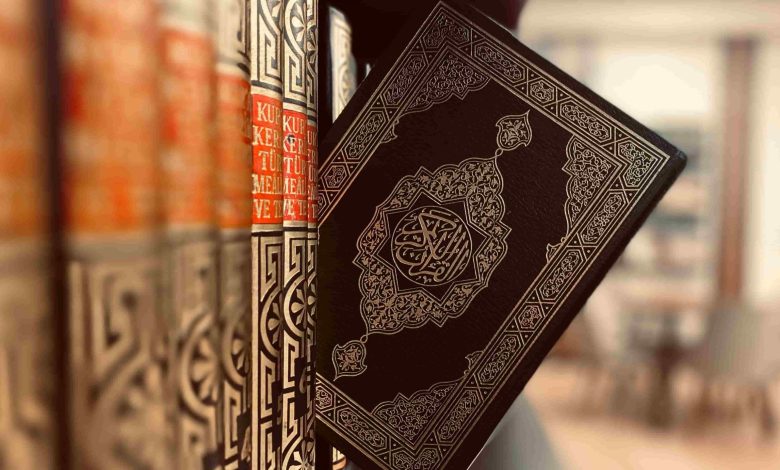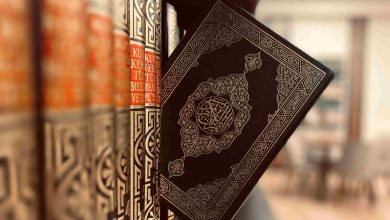Friday sermon: Welcoming the Islamic New Year 1447 hijrah

By Imam Murtadha Gusau
In the Name of Allah, the Beneficent, the Merciful, all perfect praise be to Allah the Lord of the Worlds. May His peace and blessings be upon our beloved Prophet Muhammad (Peace be upon him) and upon all his family and companions.
To proceed: Dear brothers and sisters! The first of Muharram, commonly known as the Hijrah new year, signifies an important point in the Islamic history, that is the journey of the Prophet Muhammad (Peace be upon him) and his companions from Makkah to Madinah.
Hijrah, which literally translates to migration in Arabic, refers to a major accomplishment by the earliest Muslim Ummah.
After facing persecution from the local tribe of Quraish, the Prophet Muhammad (Peace be upon him) with a few of his followers fled Makkah to Yathrib, later renamed by him as Al-Madinah Al-Munawwarah. This sacred city in western Saudi Arabia is known today as Madinah.
The date of this migration constitutes a turning point in the Islamic calendar as it symbolises Islam’s transition from being viewed as a simple religion to becoming a unique traditional culture and heritage, a way of life.
This was a significant change for early Muslims as politics, the economy, social connections, and all other facets of life were subsequently changed.
In this context, Hijrah also symbolises the shift when Muslims were no longer being predominantly viewed as a minority group of people who were persecuted and in danger of death, to positioning them as a powerful regional force with a strong central leadership.
It was also at this time that Islam began to spread through institutionalised Da’awah (inviting others to Islam), which was established by the state, as opposed to individual Da’awah that existed in the early phase of Islam.
The migration from Makkah to Madinah made room for several changes in Islamic legislation and jurisprudence in different aspects.
The Prophet Muhammad (Peace be upon him) built the first Mosque in Islam, Qubah Masjid. He carried the stones himself and built that little, simple, but mighty structure. This was the start, and shortly after that, other Mosques followed in Madinah, and later in other cities.
He created cordial ties between the Madinah citizens – known as Al Ansar, who supported him when he came – and the Muslims who had migrated from Makkah, who were called Al-Muhajirin (the migrants).
It was crucial for Muslims to get along with one another. Instead of having the pride and haughtiness of tribes, as they did before the advent of Islam (a period called as Al-Jahiliyyah), they ought to base their brotherhood on their shared religious beliefs.
One important change that was also brought to Madinah after their arrival had to do with the water system. The Prophet Muhammad (Peace be upon him) instructed the companions to drill wells throughout the city. There was enough clean water for everyone after more than 50 wells were opened in the city of Madinah, it was reported.
He urged the companions to create gardens and nurture the soil, assuring them that whoever planted crops on barren land would eventually own it. As more people began to labour and cultivate, there was soon enough food for everyone.
On a socio-economic level, there were no poor individuals in Madinah within a short period of time. Everyone had access to food and shelter, and the Prophet Muhammad (Peace be upon him) would offer visiting delegations with presents.
The city soon became one of the safest in the region. There were vanishingly few instances of theft, rape, intoxication, or murder, as those that did occur were dealt with right away.
As Hijrah – in its broad meaning – also means in Arabic “to leave,” one may derive a lot of lessons from this important event. One of them is to abandon the evil deeds and devote oneself to a life of submission to and worshiping of Allah.
As the Prophet Muhammad (Peace be upon him) said: “The Muslim is the one from whose hand and tongue all Muslims are safe. And the muhajir (immigrant) is the one who abandons what Allah forbids.”
In this sense, Hijrah teaches that Muslims should spread goodness everywhere they go.
Moreover, despite the fact that Makkah was the birthplace of the Prophet Muhammad (Peace be upon him) and his loved place, he did migrate from it to fulfill the commands of Allah.
The lesson that one can draw from this is that the Muslim can abandon his desires for the sake of his creator. Other important values from the Prophet’s story include patience, perseverance, and entrusting Allah undoubtedly.
“With difficulty comes ease,” reads one particularly pertinent passage of the Qur’an. Indeed, Hijrah also teaches the believer not to lose hope and trust Allah’s plans, for he knows best and is able to ease one’s problems as long as the person does not despair from his mercy.
Respected brothers and sisters! The Islamic New Year has come upon us – but why do we still consider and follow this calendar when everything around us revolves around the Gregorian calendar?
The Hijrah calendar is not just any calendar, it is an extension of our Islamic faith and continuation of our Islamic heritage.
The calendar marks one of the greatest incidents to have occurred in the history of Islam and even the world, serving as a turning point for Muslims and humanity as a whole; the Hijrah (Migration) of our beloved Prophet Muḥammad (Peace be upon him) from Makkah to Madīnah.
This momentous Hijrah laid down the foundation for an Islamic state that would eventually spread its beautiful and monotheistic message throughout most of the known world.
In the centuries to follow, it would spread its civilisation, scientific and technological advancements, peaceful coexistence, tolerance and freedom for non-Muslims to practice their religion to countries that were still living in the Dark Ages. It presented itself and model of justice, equality and good governance for many other civilisations.
When Umar Ibn al-Khattab became the Caliph of the Muslim Ummah, he consulted the senior Companions regarding having an official Islamic calendar for the Ummah.
Umar, a man with foresight and vision for the Ummah, understood that a calendar is a crucial identity marker of a nation. He refused to adopt the calendars of any other nation as that would further their civilisation, advancement and standing in the world.
After many suggestions from the Companions, Umar announced that the year in which the Prophet Muhammad (Peace be upon him) migrated would mark the beginning of this new Islamic calendar. The calendar would begin with the month of Muharram and end with the month of Dhul-Hijjah.
Muharram is not only the 1st month of the Islamic Calendar which marks the New Islamic Year but also one of the four sanctified months of the year. As Allah, the Most High says in the Qur’an:
“Indeed, the number of months with Allah is twelve [lunar] months in the register of Allah [from] the day He created the heavens and the earth; of these, four are sacred. That is the correct religion, so do not wrong yourselves during them. And fight against the disbelievers collectively as they fight against you collectively. And know that Allah is with the righteous [who fear Him].” [Qur’an, 9:36]
The Prophet Muhammad (Peace be upon him) said: “Time has come back to its original state when Allah created the Heavens and the Earth; the year is twelve months, four of which are sacred.
Three of them are in succession; Dhul-Qa‘adah, Dhul-Hijjah and al-Muharram, and (the fourth being) Rajab Mudar (named after the tribe of Mudar as they used to respect this month) which stands between Jumadah (al-Thani) and Sha‘aban.” [Al-Bukhari]
The significance of the Islamic Calendar is evident by the fact that many Islamic rituals, obligations, acts of worship and even personal matters (marriage, divorce, age of maturity, etc.) are connected to it. For example, the three pillars of Islam are based on the Hijrah calendar: Fasting, Zakah and Hajj.
The age of maturity (bulugh) of a child, menstrual cycle of a woman, waiting period (Iddah) of a divorcee are calculated and determined based upon the Hijrah Calendar, whose months are based on lunar cycles, as opposed to solar or luni-solar.
Allah the Most High says in the Qur’an: “They ask you, [O Muhammad], about the crescent moons. Say, “They are measurements of time for the people and for hajj [pilgrimage].” [Qur’an, 2:189]
It is for the above reasons that Muslims all over the world should use and promote the Islamic Calendar. The following are some practical examples and tips that can help the Muslims keep this importance Islamic heritage and faith alive:
1. Always write the Hijrah date next to the Gregorian whenever possible.
2. The Hijrah Calendar should be adopted in all Masjids, Islamic Centres, websites, newsletters etc.
3. Islamic scholars, Du‘at, preachers and speakers should use the Hijrah Calendar whenever possible.
4. Buying and supporting digital watches, smartphone apps, etc. that have the Hijrah Calendar and using it in our houses so our families can also get used to referring to it.
In conclusion, the revival, preservation and promotion of the Hijrah Calendar is one of the ways that the Muslims can protect their Islamic identity.
In a world and a time where Muslim’s identity is threatened and conflicted, it behoves us to re-establish and hold up, proudly and confidently, the various signs of the religion and faith that will help the Muslims to stay strong, unique and steadfast upon the way of Islam.
All praise is due to Allah, the Lord of the worlds. Prayers, peace and mercy are upon our beloved master, Muhammad, the son of Abdullah (Peace be upon him), his family and Companions.
This Jumu’ah Khutbah (Friday sermon) was prepared for delivery today, Friday, Muharram 02, 1447 AH (June 27, 2025).
Murtadha Muhammad Gusau is the Chief Imam of Nagazi-Uvete Jumu’ah and the late Alhaji Abdur-Rahman Okene’s Mosques, Okene, Kogi State, Nigeria. He can be reached via: gusauimam@gmail.com or +2348038289761.




